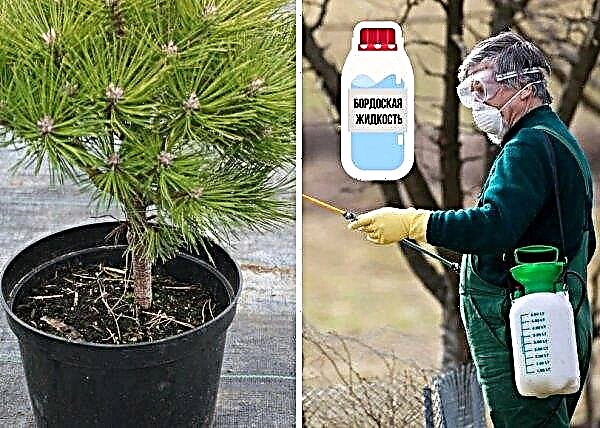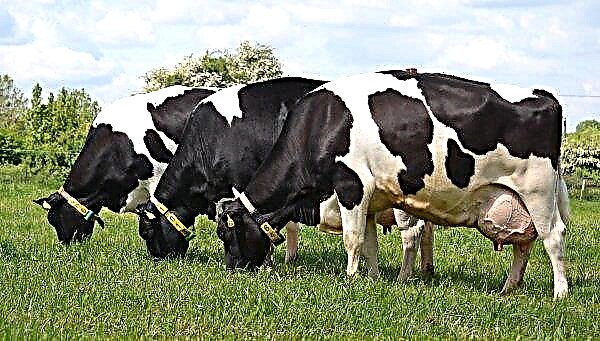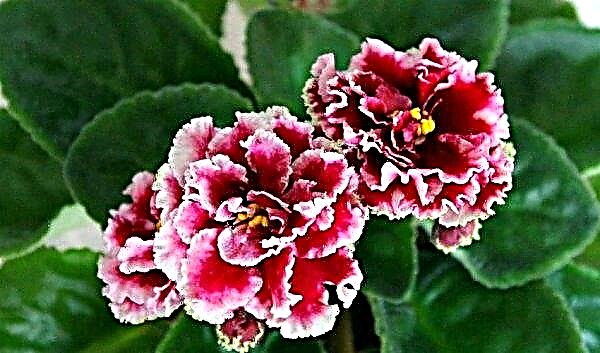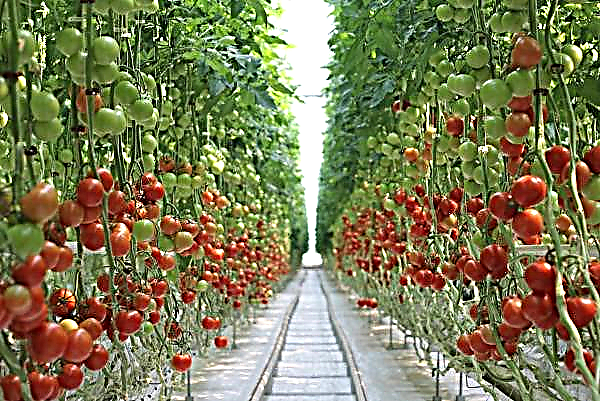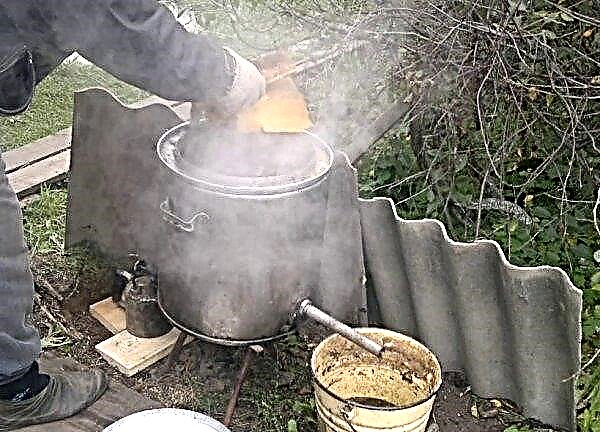It is difficult to walk past Variegatus jasmine and not stop to admire its beauty. The whiteness of the leaves merges with creamy petals, creating a delicate composition, and the flowers themselves attract an unobtrusive sweetish smell. A coronal plant is easy to grow in the garden, because it is unpretentious in care, requiring only the creation of the necessary conditions and due attention.
Botanical Description of Jasmine Variegatus
It's time to dispel the popular delusion and present the bush in its true form, because the plant is mistakenly called jasmine for small, pleasantly smelling flowers. In fact, the Variegatus variety belongs to moths - the genus of shrubs from the Hortense family and has nothing to do with jasmines.
But, since this name has become a household name, the article continues the tradition of this naming. Species refers to deciduous or partially deciduous plants with a thin gray bark.
The bush forms a dense crown up to 2 m high. Small flowers are painted in white or cream color, reaching 3 cm in diameter. They are formed on inflorescences in the form of a brush, counting from 3 to 9 pieces each. The corolla consists of 4-6 round-shaped petals, and the fruit box contains up to 10 thousand small seeds. The flowering season falls in June - July.
 The leaves of the variety are irregularly shaped, 7–9 cm long, dark green with white bordering (some of them are completely white).
The leaves of the variety are irregularly shaped, 7–9 cm long, dark green with white bordering (some of them are completely white).
Growing conditions
To grow a healthy lush bush, you must adhere to the correct conditions of agricultural technology, starting from planting a seedling. Even the most unpretentious plant may not take root in acidified or depleted soil, may stop growing under inappropriate weather conditions.
Did you know? The name of the variety “Variegatus” is translated from Latin as “motley”, which explains the spectacular and eye-catching color of this species of mock orange.
Since at the developmental stage the bush is most sensitive to external factors, it is important to ensure its growth in the most acceptable environment, so that it gains strength, absorbing vitality from the soil, air, sun and moisture.
Video: Growing and caring for jasmine
How to choose a place
In order to achieve abundant flowering, it is necessary to plant seedlings of the coronary mockworm Variegatus in sunny areas or partially shaded. With a large amount of light, the bush develops in full force, delighting with large flowers and lush branching. Its decorative appearance and planting in the shade will not spoil, but in this case the flowers will be smaller, and the bush will tend to go up.
Important! Before planting, you should take care of the neighborhood, as the mock-up bush is a lush and perennial bush. In this regard, they primarily select open areas where the plant can grow freely.
To choose the most spectacular location, think about the goals of the composition in advance. If small inflorescences and an elongated plant will “play into your hands”, then you can choose the second method without sacrificing the natural beauty and health of the plant, because it will equally develop in the sun and in the shade.
 But with what to be careful, it’s with moist, swampy and too moist areas. Jasmine will also not grow on limestone and rocky landscapes.
But with what to be careful, it’s with moist, swampy and too moist areas. Jasmine will also not grow on limestone and rocky landscapes.
Soil preparation
The shrub prefers cultivated and cultivated garden soils, which are planted with organic fertilizers or compost before planting. Areas not suitable for planting places with a high level of occurrence of groundwater, marshy areas, as well as abandoned, stagnant soils without oxygen. Jasmine will not grow on depleted soil and clay surfaces without artificially created drainage, for which sand, brick, gravel, gravel can be used.
Important! Nitroammophoska is a complex chemical compound that serves as a fertilizer for plants. It contains a high concentration of nitrogen, phosphorus and potassium in different dosages, which can increase crop yields and fertility up to 70%.
Soil preparation involves several steps:
- Loosening the soil.
- Digging holes up to 50 cm deep.
- 10 cm thick drainage device.
- Soil treatment with nitroammophoska solution.
- Planting a seedling.
- Abundant watering.

How to Plant Jasmine Variegatus
If the planting technique is about the same, then there are several ways to grow jasmine on your plot, since it can be propagated by cuttings, seeds, dividing the bush and layering. Each method involves carrying out the procedure at different times of the year and its own algorithm of actions.
Important! The generative method of reproduction (seed) has a germination capacity of 100%.
Vegetative methods for planting a varigatus moths require less lengthy preparation, however they are no less effective and are available even to beginner gardeners. Below are descriptions of each method with step-by-step steps and a photo.
Cuttings
Cuttings are one of the simplest methods for planting jasmine. They carry out the procedure, as a rule, in the fall, leaving the sprouts for the winter in the basement for spring planting. Lignified short branches with flowers and a green top are used on cuttings.
In summer, landing is carried out at the end of June, following the step-by-step instructions:
- Tear off the cuttings with your hands from the main shoot so that at the base there is a part of the wood (“five”).
- Pour drainage to the bottom of the pot, and sand-peat mixture on top, which should be slightly moistened.
- Cover the soil with clean sand, a layer of 3-4 cm.
- Pour the prepared soil with a solution of any fungicide (Trichoderma, Topaz, Falcon, etc.).
- On the handle, remove the lower leaves and inflorescences.
- Put the sprout for half a day in a solution of the stimulant ("Epin", "Quantum root", "Pennant").
- Pour the powder that activates root formation onto a flat container and dip the cut of the cut into it.
- Plant the sprout in a pot with prepared soil at an angle of 45 °.
- Cover with a transparent bag or flask, sending to a shady cool place for rooting.
- If possible, periodically spray the cuttings with water.

Seeds
The seed method of planting jasmine is more time-consuming, so it is often used not in garden plantings, but in breeding events. But if you have seeds and you want to practice their cultivation, you can do this on your site, following the rules of agricultural technology.
With this method, the shrub blooms for 7-8 years after planting. The procedure is carried out in autumn or spring, and the seeds themselves are collected from fruit bolls formed after flowering.
Important! Autumn sowing is carried out at a temperature not lower than + 10C °. For this, the seeds must undergo preliminary stratification (aging in the refrigerator for 2 months).
If you decide to sow seeds in the spring, then it is better to do this in early March, following the scheme:
- Soak the seeds in water at room temperature for 2-3 hours, putting them in a tissue bag.
- For a few days, bury a bag of seeds in moist peat.
- Prepare a box with a substrate on the basis of peat, compost and leafy earth (peat with turf can also be used).
- Cover the substrate layer with sand mixed with seeds, 3 cm thick and moisten the surface with water (from a spray bottle).
- Cover the container with film, creating a greenhouse effect.
- Open the "greenhouse" every day for a couple of hours for ventilation and spray sand with water.
- After emergence, treat the sprouts with a solution of potassium permanganate.
- In early summer, transplant seedlings into open ground - in a shady and sheltered from the wind place.
- Before the onset of frost, seedlings grown up to 20 cm should be mulched with peat.
- With the coming of next spring, cut off the aboveground parts for abundant branching.
- By autumn, transplant seedlings to a permanent "habitat" and cover the winter with mulch.
 Also, seeds can be grown by seedlings at home, and then moved to the garden plot.
Also, seeds can be grown by seedlings at home, and then moved to the garden plot.
Layering
By layering, the plant is propagated in early spring, until the budding period. Before this, in the fall, anti-aging pruning is carried out to hemp to stimulate the appearance of fresh shoots. The pruning process is best done from an adult or young bush with a root system that is already strong.
This method is simple and effective in that it allows you to grow several young shoots at once for subsequent planting. The algorithm for the reproduction of the mockingbird Variegatus by layering consists of the following steps:
- In April, with the onset of the active phase of vegetation, choose the branch with the highest number of buds.
- Tilt the escape to the ground and draw a line to create a furrow.
- Dig a hole 7-10 cm deep and place a branch in it, pressing the upper part with a peg or digging it into the ground.
- Water and spud - as the shoots grow.
- With the onset of autumn frost, cover the bed with compost.
- Next fall, separate the young branches from the bush and transplant to a permanent place.

Cuttings can be planted earlier, in this case seedlings are separated, planted in a specially designated area (like cuttings), and when they are two years old they already move to a “permanent” growth area. For the fastest formation of young jasmine, furrows can be spudded with a mixture of sand, peat and soil.
Jasmine Care Variegatus
Caring for a crowned forelock will not cause much trouble, however, you also need to allocate time to take care of it. Even the most unpretentious plant needs periodic watering, fertilizing, mulching and thinning.
Important! Do not forget about the weekly removal of weeds, loosening stagnant soil.
Experienced gardeners also recommend rejuvenating and shaping pruning so that the bush grows correctly, forms a magnificent crown, without losing its decorative effect.
Proper watering
Abundant watering is especially needed by a young seedling, gaining strength. A barrel circle is made around it and irrigated, maintaining moderate soil moisture. When jasmine “gets older”, the procedure is carried out in accordance with weather conditions.
 With a lack of moisture, the leaves of the plant lose turgor (elasticity of living cells), turn yellow and fall, and the flowers do not bloom. Watering the shrub should be with warm, settled water, preventing the formation of lime in the soil.
With a lack of moisture, the leaves of the plant lose turgor (elasticity of living cells), turn yellow and fall, and the flowers do not bloom. Watering the shrub should be with warm, settled water, preventing the formation of lime in the soil.
In early spring, before flowering begins, it will be useful to spray the leaves (by dissolving the growth stimulants listed above) in water, and mulch the trunk circle with a thick layer of peat, which will allow moisture to hold for as long as possible.
Important! It should be remembered that, just like the water content of the soil, the mockwort does not tolerate drought, so during the hot period (in June - July) up to 2 buckets of water are poured under each bush.
Fertilizer and fertilizer
At the initial stage of formation, the plant is not fertilized, but fertilized in the second year after planting in a permanent place. It is recommended to add mineral and organic substances twice a year - before flowering (April - May) and after (July). Before the leaves bloom, you can pour the bush with infusion of mullein, prepared in a ratio of 1:10 water or mineral solutions from urea, potassium and superphosphate (each component 20 g per 10 l of water).

This will accelerate the growth of mock lick, stimulate its abundant growth and activate flowering. An alternative to the mineral complex can be a mixture of wood ash, which is poured with a bucket of water, insisted for 3 days and watered with a solution of the bush. This component contains a large number of macro-and microelements, without which the normal development of the plant is impossible.
Important! The second top dressing after flowering is done “dry”, introducing mineral components into the soil of the near-trunk circle.
Lighting
Chubushnik is a photophilous plant, but young, immature shoots or cuttings must be shaded from bright sunlight, which can negatively affect the leaves and burn the plant (especially with regard to the aggressive spring sun).

After planting a bush in a permanent place, on the contrary, it is necessary to provide a sufficient abundance of light, provoking the formation of large inflorescences and lush flowering. Jasmine, growing in shady or windy areas, acquires a deformed shape, an elongated crown and small flowers.
Soil care
In order for air to penetrate the soil, loosening should be done periodically, especially during periods of prolonged drought. After the procedure, the surface crust loosens, weed shoots are destroyed, the roots of large weeds are dug up.

During the absence of rain in the hot summer months, it is very important to loosen the near-trunk sections so that the soil is saturated with oxygen and gives useful substances to the roots. With proper soil care, the bush grows and blooms profusely, so loosening the jasmine to a depth of 3-4 cm will only benefit.
Humidity
Chubushnik Variegatus does not tolerate long periods with a high level of humidity, poorly takes root in wet soils. If your garden area is decorated with jasmine, do not forget to observe the condition of the soil around it. Drought and prolonged lack of watering can be fatal for the bush, as a result of which jasmine leaves curl, darken and fall off.

Humid air is carried by the bush a little easier. It is moderate air humidity that increases the decorativeness of the plant, so when it is deficient, the leaves are sprayed. To do this, use warm, settled water, and perform the process manually for each bush or apply a sprinkling method based on spraying moisture in the form of rain over the plant and the soil surface.
What are the mistakes when growing
Even the mockworm Variegatus is not immune from ailments and how every plant can be affected. Most often, their cause is weakened immunity - the result of improper care or inappropriate conditions for the bush. So that in the process of growing a healthy and lushly blooming jasmine without problems, you should remember about spring top dressing, sanitary pruning and preventive treatment with insecticides.
Important! Jasmine Variegatus can become a victim of attack by a spider mite, aphid, weevil. In this case, treatment with one of the above drugs is used in conjunction with insecticides (Aktara, Aktofit, Provado).
Signs of care errors may include:
- Drying shoots. The complication is the alkalization of the earth due to irrigation with hard water. Try to defend it before use or “remake” the used substrate.
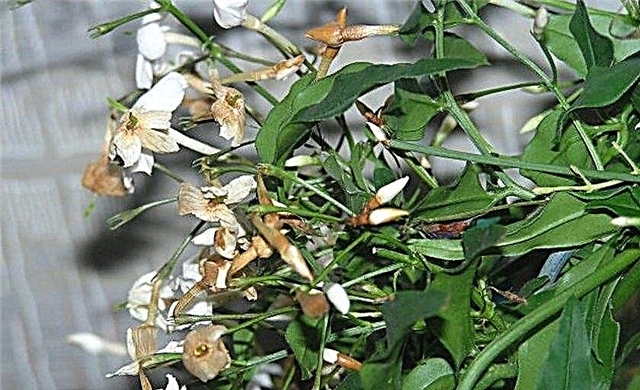
- Yellowing leaf tips. The disease lies in the lack of moisture in the soil and air. You can fix the problem by abundant watering or sprinkling to maintain an optimal level of humidity.
- Curl of leaves, their drying and falling off. The reason may be insufficient watering, overdried air, high temperatures. To solve the problem in the hot season, you need to carry out watering and spraying more often.

- Brown spots on foliage and inflorescences. A likely cause is direct sunlight that burns foliage. You should shade the area with tall or weaving plants. Young bushes should be transplanted immediately to another place.
- Lack of flowering. This situation may occur due to a lack of light and the plant is in complete shade. Also, the bush does not bloom due to irregular pruning and depletion of the soil. Add mineral dressings and transplant jasmine to a site with enough sun.
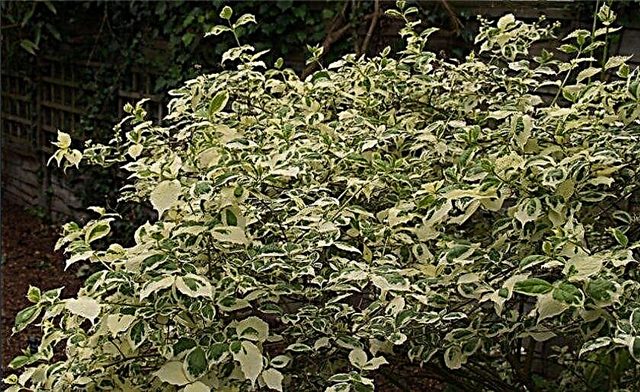
- Dropping leaves. This happens when deepening the root neck. It is necessary to remove the top layer of "excess" soil (it is recommended to do this in spring).
- The appearance on the green white plaque. This ailment indicates a defeat by gray rot. Affected branches are removed, while healthy ones are treated with fungicides (Trichodermin, Horus, Fundazol, Fitoverm).
Growing Tips
In order for the mock-up guy to please you with large flowers, each year becoming more magnificent and more beautiful, the main conclusions necessary for remembering to everyone who plans to grow a bush on their site are presented below:
- for planting, you should choose a semi-shady place, but with a sufficient abundance of light, without direct sunlight throughout the day;
- deepen the root neck into the soil no more than 3 cm;
- every fall to make forming pruning to obtain young shoots in the spring;
- once every 2-3 years to do sanitary pruning with the removal of old branches that take life away from new ones;
- twice a year to do mineral and organic dressing - before and after flowering;
- Allocate time for loosening the soil in the hot months;
- in June - July during the period of drought, irrigate abundantly with 20-30 liters of water for each bush;
- in the summer months to remove weeds weekly;
- monitor moderate soil moisture and perform periodic spraying.

Unique in beauty, the perennial and lushly flowering shrubbery bush is especially attractive in the guise of the Variegatus variety, which is distinguished by a fabulous combination of cream flowers and white-lined leaves. This is the king of garden shrub plants with an alluring aroma, which is easy to care for, which makes the plant attractive to growers with any experience.




